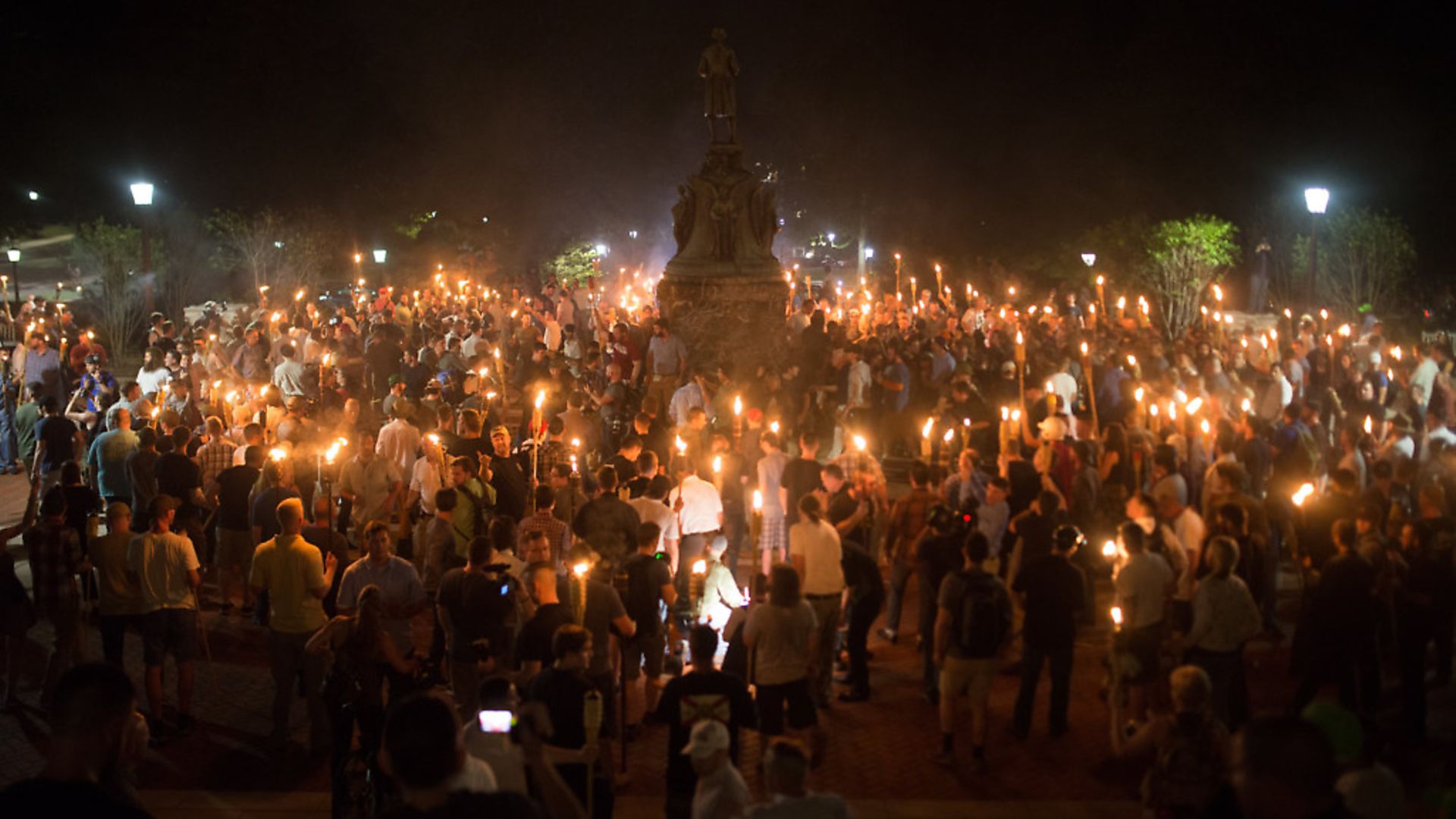
BONNIE GREER on why white supremacists seeking to whitewash Europe’s history rely on a faux-medieval past.
The doctrine of white supremacy is underpinned by a faux-medieval past and the look and feel of a 1930s Busby Berkeley movie.
First, the phony white Middle Ages: The idea that Europe, from about the year 1000 to the dawn of the modern age, around about the late 1400s and 1500s, was some bastion of whiteness is absurd.
Yet this is the foundation of what the adherents of supremacist ideologies believe and fight to ‘restore’.
For one thing, the geography of Europe, technically not a continent but the river-imbued peninsula of Asia, throws the idea of some sort of enclave right out the window.
There just simply was never such a thing as a ‘White Europe’. It could not be. Medieval Sicily, for example, was a society built on Christians, Muslims and Jews, north Africans and northern Europeans. Medieval London, too, was part of this multicultural Europe.
John Blanke, a trumpeter of Henry VIII’s, is depicted on the famous Westminster Tournament Roll, a 60ft-long painted roll depicting the pageant held to celebrate the 1511 birth of the king’s first son.
In pride of place on this artefact is the black male trumpeter. He is full-on and up front. Historians believe he was an example to the world of the cosmopolitan outlook of the young Henry VIII. After all, the monarch had married a Spanish princess, eventually the aunt of the Holy Roman Emperor.
There was no way that Henry was going to make England look out of the loop. It could have been considered fashionable to have an African trumpeter at court. After all, the Crusaders had seen them in the Muslim courts of north Africa, resplendent examples of wealth and privilege.
Medieval England, bursting with colour, not only in its churches and in clothing, had people of colour, too. The recent discovery that the skeletons of some of the sailors of Henry’s flagship, the Mary Rose, may be the remains of Africans, blows wide open the idea of an all-white England. And there is no record of John Blanke ever having left London.
The Twitter account @MedievalPOC publishes examples of European art depicting people of colour, including dozens of ‘Magi’ paintings, all of them with an African man, all of them depicting him as resplendent and equal.
The beautiful head of St Maurice, depicted as a black male crusader, was so iconic to the people of Magdeburg, Germany, that even the Nazis did not destroy it. Placed on a pedestal in the cathedral there, it is clear that its creator based it on a real man of African descent. His placid, beautiful face is as alive and as modern as anyone’s, and a reminder that the period in which he was sculpted is only years away from us on the arc of time.
Paul B. Sturtevant, author of The Middle Ages in Popular Imagination and editor in chief of The Public Medievalist, describes the ‘White Europe’ symbols that supremacists use as ‘messed up’.
In a recent article, Sturtevant stated that he had counted a number of references to the Middle Ages in the markings and writings on the arsenal used by the New Zealand shooter.
There is the ‘black sun’ which Sturtevant claims became associated with the Third Reich after Heinrich Himmler decorated one of his castles with it. It is a kind of decorative medieval thing that Surtevant compares to a Nazi symbol. In other words: it means nothing.
The historian also cites a fan favourite of adherents of the ‘White Europe’ doctrine: Charles Martel, the military leader credited with defeating the Muslims at the Battle of Tours in 732, a feat that has been blown so out of proportion as to be ludicrous. But hate groups have raised Martel to mythic proportions.
Racism in the Middle Ages, Sturtevant points out, was not about skin colour: it was about what side of the river a person came from.
The Nazi hierarchy loved fashion and Hollywood movies – the kitsch variety. Party member Hugo Boss designed the SS uniform to exemplify the idea of the ‘superman’. The ‘look’ was all: the length of the leg just right.
Along with that came movies. It is well-documented that Hitler loved the 1935 Gary Cooper film The Lives Of A Bengal Lancer, which was billed as ‘three British soldiers on the northwest frontier of India struggling against the enemy – and themselves’. Hitler saw the ‘struggle’ in terms of white man against the dark hordes.
The cartoon idea of black and brown people comes not only from some theory, but from the idea of Gary Cooper, crouched behind some sandbags, fighting off what Kipling called ‘the Fuzzy-Wuzzies’.
Neither Hitler nor Goebbels, his propaganda minister, tried to hide the fact that they were making up history, making up theory, making up a look and a feeling for white superiority. Germania, the new capital for the new white world was going to be built on the idea of a Hollywood movie set’s idea of a modern city.
Albert Speer admitted that he created the Nuremberg rallies with his famous ‘cathedral of light’ to imitate what Hollywood musicals did.
Leni Riefenstahl, who invented the Nazi documentary style, loved Busby Berkeley movies. It is possible to watch SS documentaries and see how the stepping, the camera angles of the men coming down the steps, the great blocks of men moving in precision and power, are very much like the synchronization of a Berkeley movie.
The awesome Lullaby Of Broadway number from the masterpiece that is Berkeley’s Gold Diggers of 1935 can be seen as the treasure-trove of Nazi ‘master race’ marches. From the beginning of the number, with that magisterial face coming forward from out of the dark, to the march down the stairs of the dancers, all of it looks like a parade straight out of Hitler’s Berlin. But Berkeley got there first.
Look at Riefenstahl’s film of the 1936 Olympics; look at the 2017 Charlottesville rally with the men walking down the street holding torches used for barbecues in imitation of the night rallies of Hitler’s minions; look at the way they move in step and turn and stop, the look and image and ‘history’ of white supremacy then becomes what it is: images that have all of the historical value of the cards you get out of a cereal box. Or a bunch of stories woven together by the guy at the end of the bar.
And for those marches full of Übermenschen? They’re imitating Hitler’s Nazis doing what amounts to lame imitations of chorus girl routines.
With none of their grace and wit and power. Or immortality.










